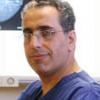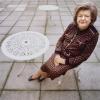Women who discover a lump in their breast will be referred to a specialist for further investigation and diagnosis. This will involve collecting a number of pieces of information in order to get a clear picture and this is often called the “diagnostic jigsaw”. Integral to this is the triple assessment. A detailed medical history and examination form the first part of the jigsaw. The second part entails taking cells from the lump by fine needle aspiration or core biopsy and examining them under a microscope. The final part of the assessmentinvolves taking images of the breast by mammogram or ultrasound scan.
When each stage of the triple assessment produces the same answer the result is said to be concordant and further diagnostic tests will generally not be required. Occasionally, if the triple assessment does not produce a clear picture further tests can be carried out to enable a diagnosis to be made.
Senior Consultant Breast Surgeon Mr Simon Marsh explains:
“Many changes in the breast are simply age-related or benign lumps but by carrying out the triple assessment, which is a thorough process, often a clear diagnosis can be reached.”








